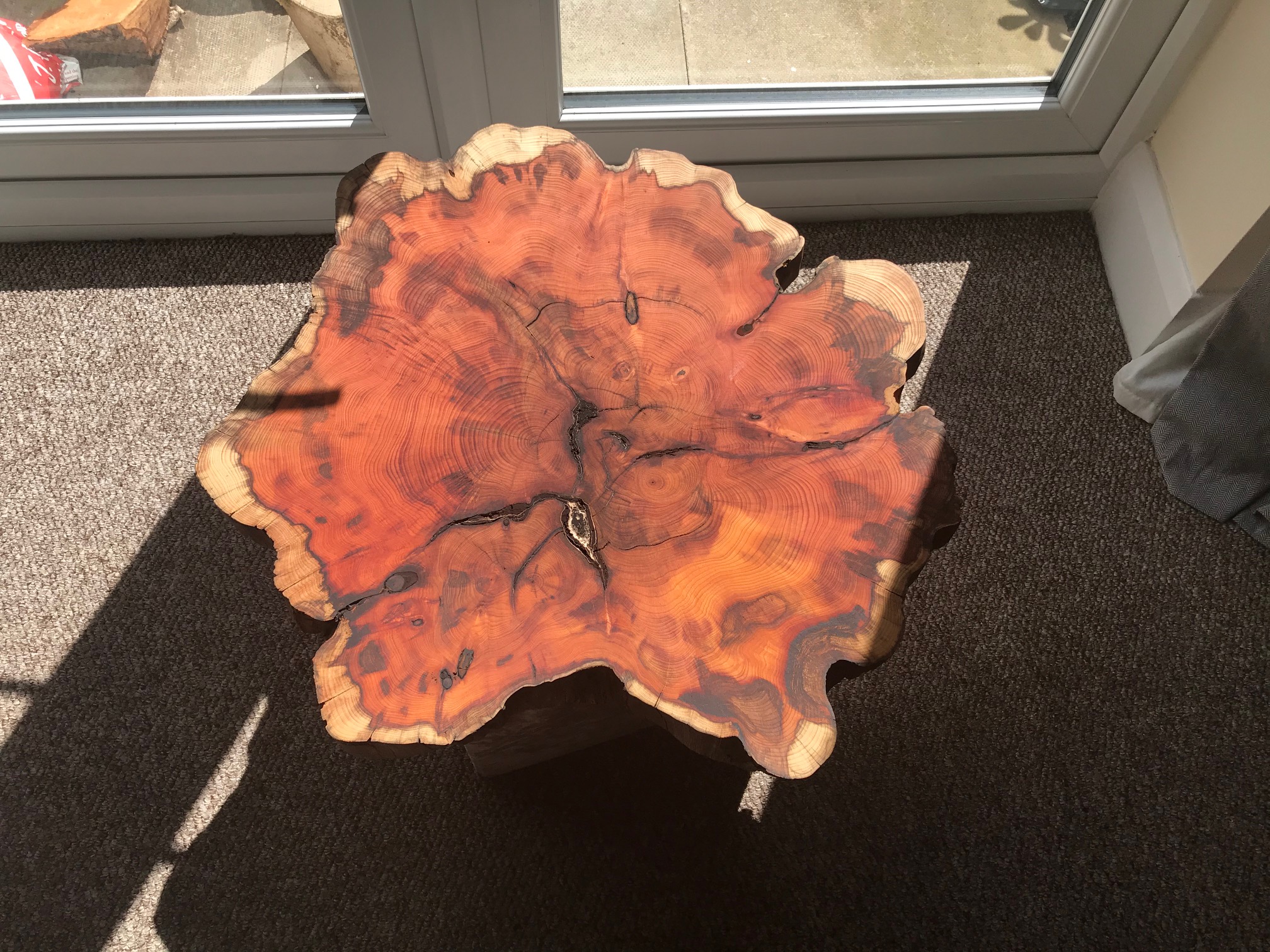acerspader
Member
Hey Guys, I am new to the forum. This looks like a great forum and source of information.
I loved working with timber when I was young but life got the way and drifted away. But now I am finally getting back into it.
My return project is a Yew Wood Coffee Table.
I bought the yew timber ring off ebay a few weeks back. Its about 600x450x50 in size and am told it was treated with pentacryl and air dried to 20% moisture content. I am so happy with this piece as the live edge and growth rings look great. However, when I inspected it closer, i spotted small holes on edge which look like woodworm. See some photos below. I really want to use this piece of timber and also not make a mess of it, and also i never bought an air dried piece before, so I have a few questions for you guys:
Is it possible to treat this woodworm so it safe to have it as a coffee table inside?
What product would be used to treat the wood for woodworm?
What moisture content would be ok for coffee table and how would i dry the timber?
What type of finish would you recommend for use as coffee table?
Thanks in advance.
Rich





I loved working with timber when I was young but life got the way and drifted away. But now I am finally getting back into it.
My return project is a Yew Wood Coffee Table.
I bought the yew timber ring off ebay a few weeks back. Its about 600x450x50 in size and am told it was treated with pentacryl and air dried to 20% moisture content. I am so happy with this piece as the live edge and growth rings look great. However, when I inspected it closer, i spotted small holes on edge which look like woodworm. See some photos below. I really want to use this piece of timber and also not make a mess of it, and also i never bought an air dried piece before, so I have a few questions for you guys:
Is it possible to treat this woodworm so it safe to have it as a coffee table inside?
What product would be used to treat the wood for woodworm?
What moisture content would be ok for coffee table and how would i dry the timber?
What type of finish would you recommend for use as coffee table?
Thanks in advance.
Rich










































